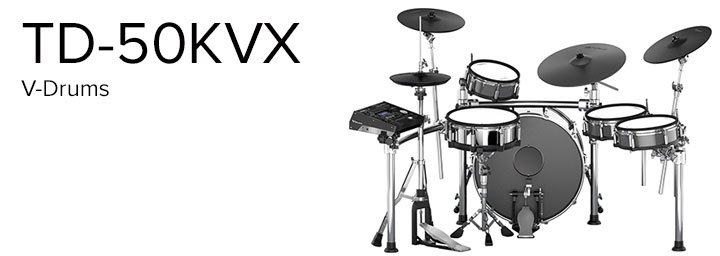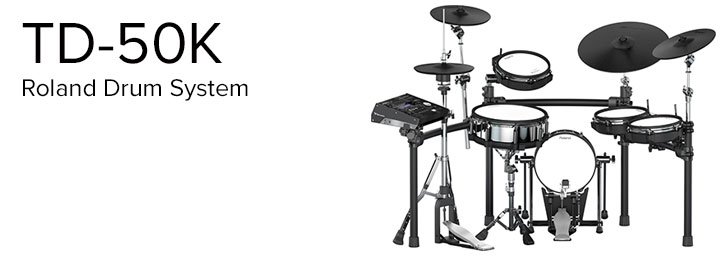The hi-hat is arguably the most played part of any drum kit. As such, there are many types and sizes of hi-hats that are used by drummers.
Roland TD-50 Hi-Hat sounds are simple to enhance on the TD-50 as you’ll see in this drummer’s guide.
The TD-50 gives you several vastly different hi-hat sounds that you can fully edit in order to cover all possible musical situations.
The TD-50 offers the ability to assign hi-hat sounds anywhere on the kit.
This includes the tom rims, cymbals, additional trigger inputs and the snare rim.
This second hi-hat is opened and closed from the hi-hat pedal as you’d normally do.
You can even layer hi-hat sounds of different sizes, add sounds to hi-hats or create interesting stacked sounds by adding china cymbals, tambourines or cowbells.
To determine how the layered sounds interact with one another, you can then manipulate the curve shape.
Contributed by Simon Ayton for Roland Corporation Australia
1. Changing the TD-50 Hi-Hat Cymbal Size
The most popular size for hi-hats is 14”. 15” hi-hats give an even bigger sound for Rock playing, while 12”-13” hi-hats can sound great for up-tempo funk, or anywhere bright and in-your-face hi-hats are needed.
Changing hi-hat size is simple on the TD-50 with a single control available.
You can adjust the hi-hats from 1”-40” for a huge range of sound possibilities.
[INSTRUMENT] | F1 (INST) | R2 (Size) 1-40
Try: 16.
2. Increase the TD-50 Hi-Hat Thickness
Dark and thin hi-hats are common in Jazz, whereas brighter, smaller hi-hats are often used in the studio for a ready-to-go, hi-fi sounding recording.
Thicker hi-hats sound more solid and give more stick attack and definition to cut through busy and guitar-heavy mixes.
[INSTRUMENT] | F1 (INST) | R3 (Thickness) THIN5-THICK+5
Try: THICK+5.
3. Move the Hi-Hat Microphone
Microphone positioning can be a challenge with acoustic hi-hats, as finding a position out of the way of the drummer’s feet and sticks that also doesn’t pick up too much of the snare or other drums often compromises the ultimate sound.
In the TD-50, you can move the microphone from the edge to the cup/bell to change the focus and tonal balance of the hi-hat for the right blend of stick definition and brightness, without worrying about microphone bleed from surrounding drums. You can even change the foot close and foot splash volume level too.
Moving the microphone away and towards the edge will yield a darker and thinner sound, with more apparent air as it escapes from the sides of the closing hats.
Moving the microphone on top and closer to the cup/bell will give a brighter sound, with more stick attack definition and an increase in overtones and sustain enhancing the TD-50 hi-hat sound.
[INSTRUMENT] | PAGE DOWN | MIC POSITION | F1 (MIC POS) | R2 (Mic Position) OUTSIDE4-INSIDE4
Try: INSIDE3.
4. Increase the Attack and Sustain of the Hi-Hat Sound
Unlike using a compressor, which can “pump” and “breathe” and sound unnatural, the transient tool works on each individual strike and is a much more effective solution to help improve stick definition, allowing the hi-hat to cut through a mix while maintaining its power for open hits.
Adjust the release time for a shorter or longer sustain depending on your taste.
[INSTRUMENT] | [PAGE DOWN X2] | TRANSIENT | R1 (TIME) | R2 (ATTACK) | R3 (RELEASE)
Try: Time 8 Attack 100 Release 100.








